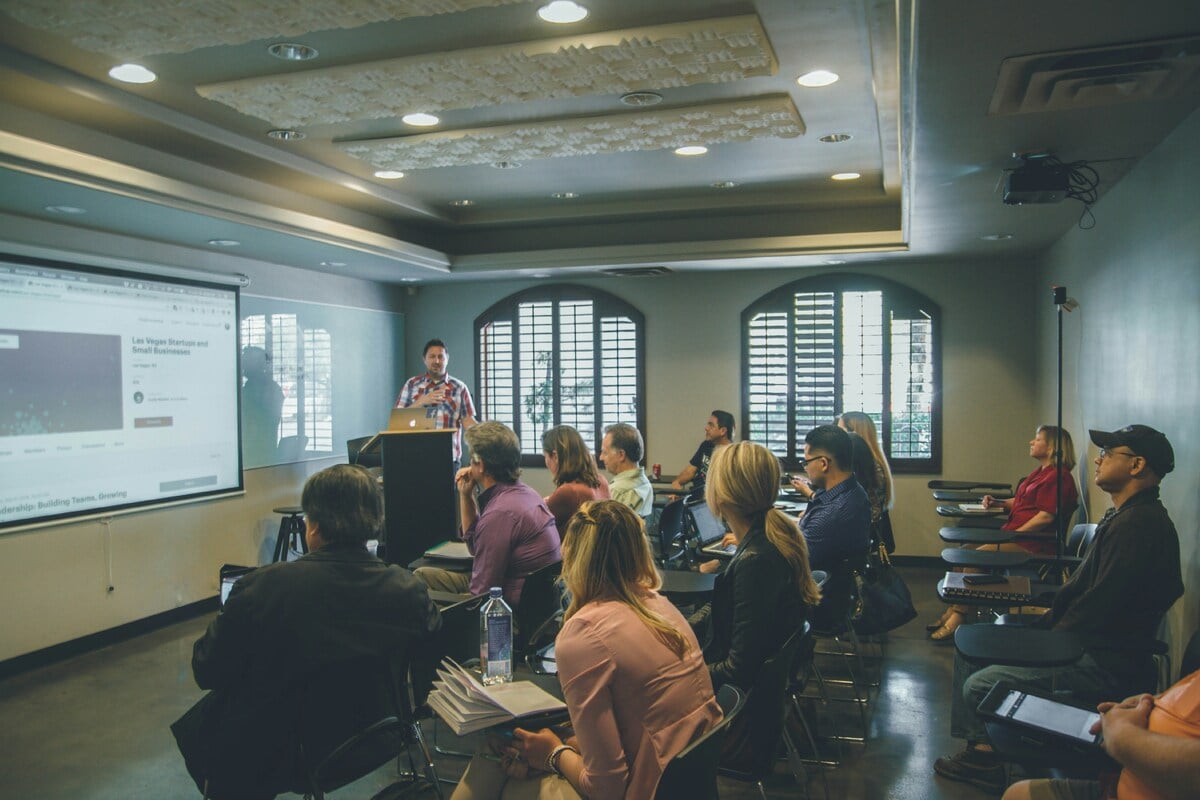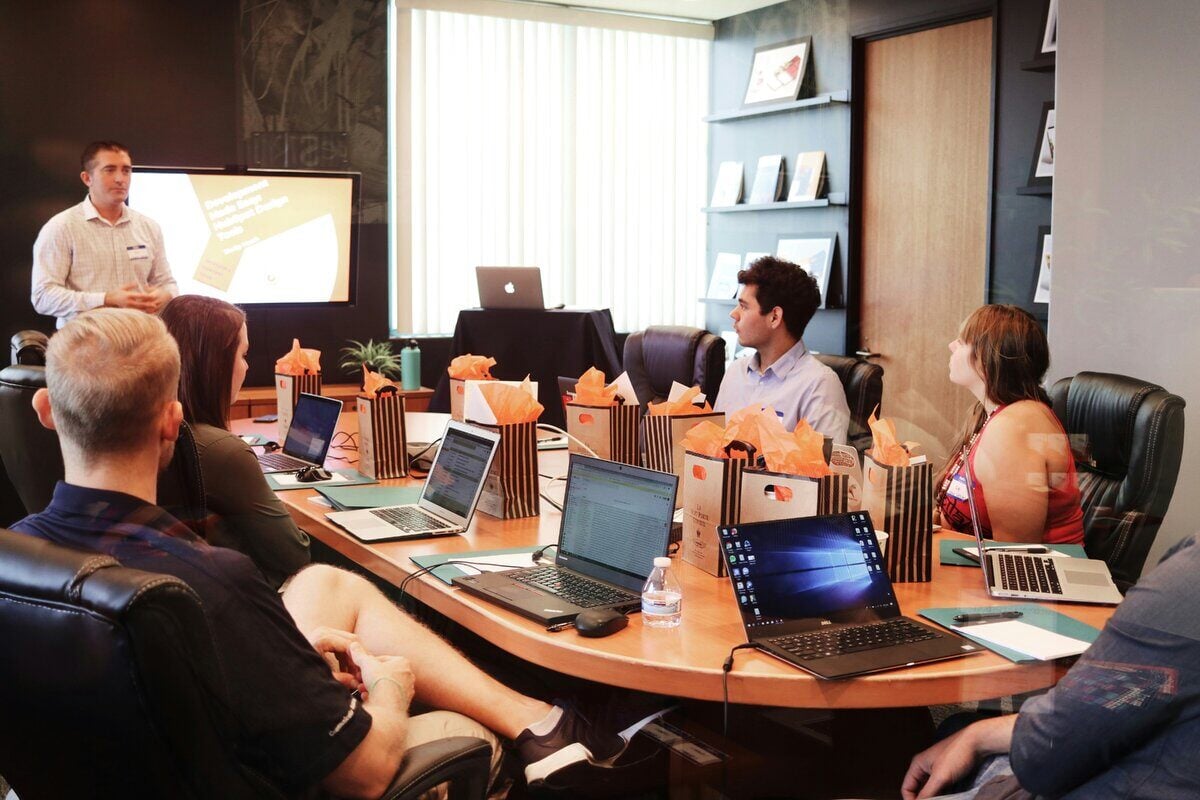
Why the Skills Gap Still Exists—and What We Can Do About It
According to one recent study, approximately 7 out of every 10 employers in the United States are struggling to fill job vacancies - indicating a roughly 70% labor shortage.
Yet at the same time, the most recently reported unemployment rate in the US was 4.20%.
Yes, that's a slight increase from last year's total of 3.90%, but it's still lower than the longer-term average of 5.68% - and it doesn't quite explain the labor shortage rate outlined above.
But one of the most important statistics of all is the following - 52% of currently employed workers acknowledge the need to learn new skills in order to advance their careers.
Not only that, but about 46% of people admit that they're not as skilled as they need to be on a day-to-day basis.
Keep in mind that this isn't people looking for jobs - this is a survey of the people who already have them.
With statistics like that, the true situation becomes clear.
It's not necessarily that there aren't enough workers to fill available positions.
It's that there aren't enough workers with the right skills to fill the right positions at the right time.
This, in essence, is how a skills gap is born.
The “skills gap” is one of those phrases you’ve probably heard tossed around in conversations about education, hiring, or workforce development.
But what does it really mean?
At its core, the skills gap is the mismatch between the skills that employers need and the ones that jobseekers actually have.
If this all describes what you're experiencing in your own business, don't worry - you're not alone.
Another study indicated that about 63% of employers currently identify it not only as a major hurdle, but a barrier to the type of business transformation they need to remain competitive and successful.
All told, it's a problem that will cost businesses in the United States a combined $8.5 trillion by as soon as 2030 if something isn't done to address it now.
But thankfully, this is a road that you do not have to travel alone.
The more you understand about why the skills gap exists, the more you'll become clear on what needs to be done about it.
Understanding The Skills Gap
What Is The Skills Gap?
As referenced, the "skills gap" simply describes a situation where there is a difference between A) the skills employers have identified that they need, and B) the skills job applicants actually have.
If you need 100 people who have skills driving a school bus and receive 200 applications from people who have only ever operated forklifts, it doesn't matter that you have two applications for every one available position to fill.
You actually received zero applications of people who currently possess the skills you've identified a need for.
Depending on the industry that you're talking about, this gap can show up in all sorts of ways.
You’ve got employers struggling to fill open positions, even in times of high unemployment.
You’ve got graduates who’ve done everything “right” - earned the degree, followed the path - but still aren’t landing jobs or thriving once they’re hired.
And in the middle of all that are educators and trainers trying to prepare students for careers that keep changing faster than syllabi can.
Why It Has Persisted For Decades
If it seems like you've been hearing people talk about a skills gap for a decade or more at this point, that's because you absolutely have.
There are a wide range of different reasons why the issue hasn't been addressed so long after it had been identified, but most of them can be summed up in two simple words:
"It's complicated."
One big issue is that education systems were never designed to move at the pace of the modern economy.
Universities and colleges are often slow to adapt their curricula, partly due to bureaucracy, accreditation requirements, and the sheer complexity of updating programs.
Meanwhile, the job market changes constantly.
New technologies emerge, industries evolve, and the demand for specific skills can shift in just a few years - or even months.
Consider the absolutely seismic impact that the release of ChatGPT has had on just about every industry you can name.
Now, consider the fact that ChatGPT was only released to the public in the fall of 2022.
There are literally students who began a four-year degree in the fall semester of 2022 who aren't done yet, despite the fact that the industry they're studying to become a part of has likely permanently changed as a result of new technology.
There’s also a communication breakdown.
Employers often don’t have clear ways to tell educators what they need, and educators don’t always have mechanisms to respond quickly.
So while one side is focused on developing well-rounded thinkers, the other is looking for candidates who can hit the ground running with practical, hands-on abilities.
These are just a few of the many, many factors that keep the skills gap wide open.
Differing Priorities Of Educators And Employers
Theory vs. Application
Another major issue has to do with the differing priorities of educators and employers.
Educators tend to teach a lot of theory, which may sacrifice time that could be spent on the practical, real-world application that employers are actually looking for.
Academic programs often emphasize theoretical understanding - think lectures, textbooks, research papers, and exams.
The goal is to build critical thinkers and lifelong learners, which is a noble and necessary aim.
But employers?
They’re usually looking for people who can apply what they know right away.
They want team members who can solve real problems, use current tools, and adapt quickly.
Misaligned Expectations
More often than not, employers also expect new hires to come in with a certain level of polish - professionalism, digital literacy, communication skills, and at least a basic understanding of workplace tools and culture.
But many graduates are taught that a degree is enough, that it’s a golden ticket to a job.
When these expectations collide, both sides are disappointed.
Employers feel like they’re not getting value from the education system, and graduates feel like the system misled them.
They’re told to “get educated,” but not taught what “being job-ready” really means.
And too often, there’s no one helping to translate between those two worlds.
The Consequences of the Divide
Frustrated Employers And Unprepared Graduates
When students graduate without the skills that employers need, it creates a ripple effect of frustration.
Companies might spend months searching for the right candidate, only to settle for someone they’ll need to train extensively.
On the other hand, you’ve got graduates who feel like they did everything they were supposed to do and are still falling short.
That can lead to disengagement, low confidence, and in some cases, resentment toward the education system.
So in the end, what you're left with is a situation where two parties enter and both walk away disappointed - essentially through no fault of their own.
Again, the skills gap and the frustrations that often stem as a direct result of it are products of a system that may have once been adequate, but that has long since passed its expiration date.
Missed Opportunities For Economic Growth
When this gap exists on a massive scale, as it's clear that it does in this country, it slows down innovation and economic growth.
Entire industries may struggle to find qualified talent, stalling projects or delaying expansion.
Maybe the best singular example of this right now is in information technology.
According to one recent study, about 90% of all organizations will face IT skills shortages by as soon as 2026.
The shortages could cost organizations an estimated $5.5 trillion in not only delays, but also quality issues and more problems that will directly lead to revenue loss.
Just a few of the skills that are highly in demand right now are cloud skills, as well as an understanding in AI and machine learning.
Startups can’t grow, factories can’t modernize, and service industries can’t keep up with evolving customer expectations.
How Strategic Learning Design Bridges The Gap
Connecting Learning To Business Needs
So how do we fix this?
One powerful approach is through strategic learning design, which means engaging employers from the start.
What are their biggest pain points?
What tools and skills are they struggling to find in new hires?
Where do they see themselves in five years versus where they are today?
These are the essential questions that you must not only answer, but also use to fuel education-related decisions moving forward.
Once you know that, you can start building programs that respond directly to those needs.
This might include co-created curricula, guest lectures from industry experts, internships, simulations, or project-based learning where students solve actual business problems.
When learners see how their education connects to real job functions, they’re more engaged - and more prepared when they enter the workforce.
Building Skills, Not Just Knowledge
But really, what this comes down to is teaching people in a way that leaves them with more than just information.
You're helping them develop practical, transferable skills - a way to take knowledge and apply it to real life.
This is where things like micro-credentials, digital badges, and competency-based education come into play.
Instead of relying solely on degrees to signal readiness, learners can build specific skill sets that align with what employers need today.
Obviously, those specific skill sets will vary wildly depending on exactly which industry you're talking about.
To continue with the IT example outlined above, you would be focusing on things like data analysis, project management, or even user experience (UX) design.
Another field would have a completely different set of skills.
But the overall point remains.
In short, it’s about preparing people to succeed not just in theory, but in the real, messy, ever-changing world of work.
That requires us all to reassess not only the education system we've built up to this point, but the one we'll depend on in the future.
In the end, the team at LX Studio believes that one of the most effective ways to address the skills gaps that exist in a variety of industries has less to do with finding new top-tier talent and is more about making the most out of the talent you already have.
If you look inward and identify several skills that your organization needs that you don't currently have access to, LX Studio can help develop custom, evidence-based learning solutions that tackle goals like deskilling, upskilling, and generally improving performance.
Again, maybe it isn't that you can't find someone with the appropriate skills to fill a position.
Maybe that person does exist - it's just that they haven't been given the tools they need to succeed quite yet.
As the only agency of its kind operating in the United States, our subject-matter experts can help effectively meet the ever-changing needs of today's multi-generational workforce in the most thoughtful and forward-thinking way possible.
If you'd like to find out more information about why the skills gap still exists and what you can start to do about it, or if you have any additional questions that you'd like to go over with someone in a bit more detail, please don't hesitate to contact the LX Studio team today.
Subscribe To Our Blog
Most Popular
Post By Topic
- blended learning (2)
- Continuous Improvement (1)
- E-Learning (1)
- equity (1)
- learning design (18)
- learning enviroments (7)
- Learning Strategy (9)
- LEM Techniques (1)
- micro-credential (17)
- Most Popular (5)
- Powered by LEM (3)
- professional learner (2)
- Skills Gap (2)
- technology (2)
- visualization (3)






